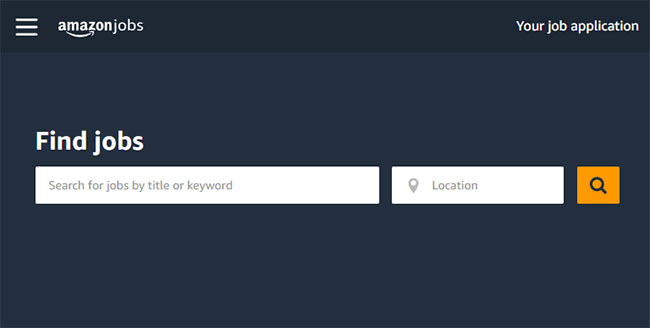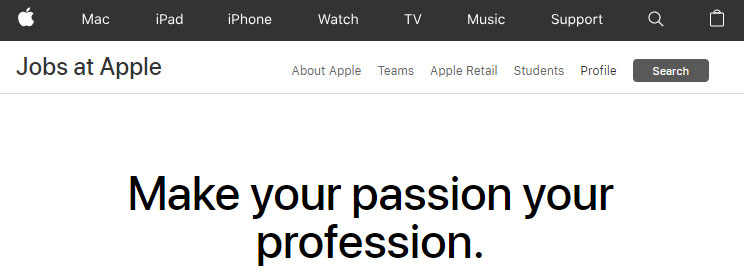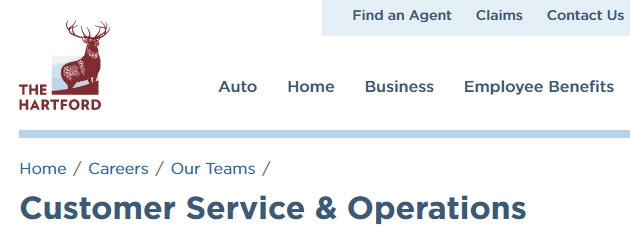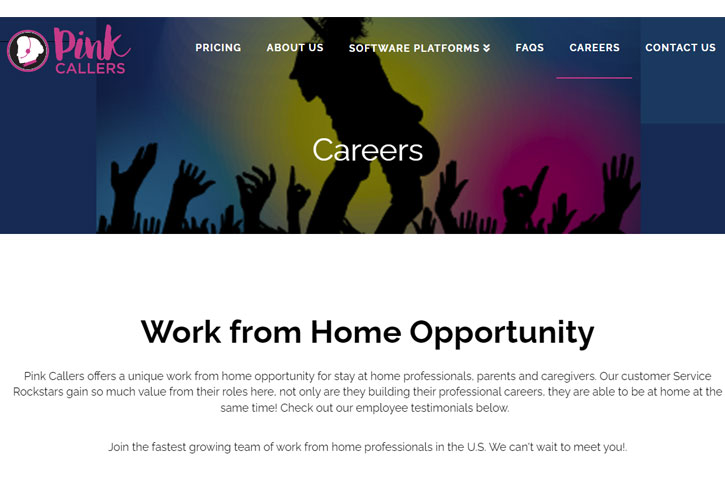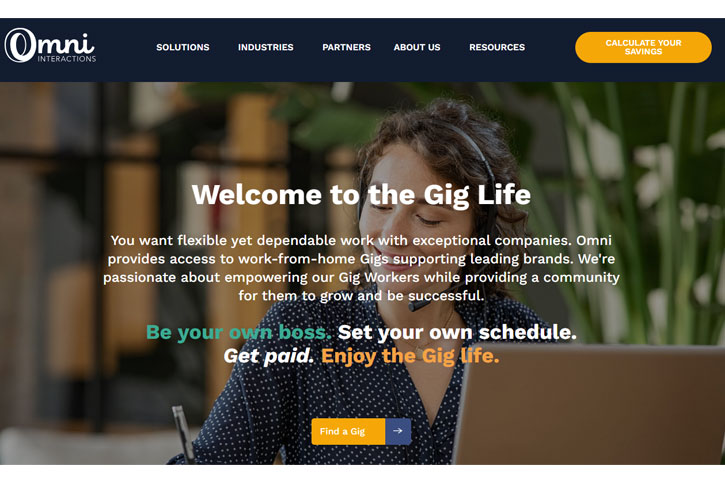More and more companies are hiring for customer service jobs from home than ever before.
Huge businesses have traditionally outsourced their customer service needs to call centers in foreign cities that have skilled yet inexpensive labor.
However, the explosion of internet speed at home and communication apps has made hiring freelancers who work from home much more feasible.
If you want to work from home and you think a customer service job fits your experience and skills, there’s no better time to start looking for one.
In this article, we’ll guide you through all you need to know to get a customer service job from home: what you’ll need to have, what positions you can usually apply for, how much they typically pay, and a list of companies that currently have customer service job openings available.
Requirements for Remote Customer Service Jobs
While each company has its own specific job requirements, there are some things you’ll need to do customer service jobs from home.
- Quiet workspace/office
- High-quality laptop
- High-speed internet connection
- Noise-reducing VoIP headset with microphone
- Up-to-date operating system on your computer
- Ability to download and use specified software
Aside from equipment, you’ll need to have the soft skills to be successful in your customer service job.
- Clear verbal and written communication skills
- Active listening skills
- Patience and self-restraint
- Positive attitude
- Composure
- Assertiveness
- Conflict resolution
- Empathy and compassion
- Emotional stability
- Taking responsibility
Educational requirements may vary as well, depending on the position and the specific company you apply for. At the very least, companies will look for a high school diploma or GED.
Types of Customer Service Jobs You Can Do From Home
Work-at-home customer service jobs can be full-time or part-time, and many companies offer flexible scheduling, including days, nights, and weekends.
Taking in calls from customer service hotlines and answering their queries is usually what comes to mind when one says “customer service job.”
But this is not the only position available out there. Here are some more positions that you can think about applying for.
1. Call center agent
Physical call centers are still very much around, but it’s becoming more commonplace to have agents at home handling phone calls in the comfort of their own homes.
You can either receive inbound calls to handle customer service or sales queries, or make outbound calls to ask survey questions, or collect debts for a credit card or loan company.
How much can you earn? $10 to $17 per hour; $13 most common
2. Online live chat agent
Live chat agents mostly do the same tasks as call center agents but deal with customers and clients over chat apps instead of over the phone.
This type of customer service job is perfect for those who want to work from home but don’t want to or can’t deal with customers over the phone.
How much can you earn? $8 to $15 per hour; $11 most common
3. Email agent
Another position you can apply for is an email agent. The work is again similar to those of call center and live-chat agents in that they provide assistance to customers but via a different channel; in this case, email.
The difference between an email agent and call center or live chat agents is that email interactions aren’t usually real-time (unless of course, a particular customer happens to be online at the same time you are).
This gives you enough time to compose your replies and give a more detailed, in-depth answer to an inquiry. The flip side is that if you do make a mistake, the documentation is easier to obtain and lasts forever.
How much can you earn? $10 to $16 per hour; $13 most common
4. Travel agent
You might think travel agents are extinct.
They still exist, but mostly to cater to corporate clients, VIPs, or large groups.
Travel agents require some experience as well as additional certification in certain software, as travel agents use proprietary software to arrange these trips.
How much can you earn? $13 to $40 per hour; $28 most common
5. Technical support agent
Tech support agents combine their customer service skills with specialized technical and computer skills.
Most companies will train their employees to provide support for their specific products, but they will expect you to already have advanced computer skills.
You would also need to have excellent communication skills for this job because this usually involves providing instructions to customers who are less computer-savvy than you are.
How much can you earn? $13 to $30 per hour; $23 most common
33 Companies Hiring for Customer Service Jobs from Home
So, what companies can you sign up with to learn more about and become a work-at-home customer service rep? Read on.
1. FlexJobs
I highly recommend starting your job search at FlexJobs.
Potential employers that list jobs here are checked to make sure they’re all legitimate companies offering actual jobs.
This means that any opportunity you find in FlexJobs is definitely not a scam.
Click here to go over the customer service job openings available today!
2. Amazon
Retail giant Amazon hires people directly and offers remote job opportunities (both full-time and part-time). What’s great about Amazon is that work-at-home employees also receive a 401(k) plan, health insurance, paid time off, and other benefits.
Amazon’s work-from-home jobs aren’t just geared at customer service.
There’s also HR, engineering, game development, retail, and finance positions, among others. The catch, though, is that most entry-level positions are paid only $10 per hour.
3. OneSupport
If you’re handy with computers and other IT items and/or have IT support experience, this company may be for you.
OneSupport offers full-time work-at-home IT technical support jobs that pay $12 per hour base pay; there are opportunities to earn $1 raises as you gain seniority.
The company offers plenty of benefits to its employees including health, dental and vision insurance, vacation time, and holiday pay.
You may also earn commissions based on product upselling.
The main disadvantage with OneSupport is that they only offer work-from-home positions to residents of 20 states; check first if you live in one of these states before you apply.
4. Apple
Yes, you too can work for Apple- and all from the comfort of your own home.
At Applecare, you can become an At Home Advisor (i.e., Customer Service and Support) and help customers with their iPhones, iPads, iMacs, and other iThings.
The company hires its at-home workers as employees and requires 20-hour workweeks via 6-hour shifts. Occasional weekend time may be required.
The pay at Apple seems better than at most other at-home companies; pay scales range from $11-$16/hour.
You also get some great employee benefits including health insurance, 401(k), plus an iMac (for business use only).
Apple’s at-home jobs are listed as city and state-specific and not all cities and states are represented.
However, from what I’ve heard, if you at least live in the same state as the job is offered, even if you live in a different city, you should apply anyway.
5. TTEC
Anyone 17 years old and up with a high school diploma or GED can apply as a call center agent with TeleTech.
Managerial positions would require a degree and experience in the industry.
You’ll need to supply your own hardware, such as a PC, VOIP headset, and internet connection.
Pay ranges from $10 to $15 per hour, depending on the position.
If you’re a second language-speaking agent, expect a higher rate. Because TTEC@Home’s call center agents are employees (not independent contractors), they also receive a 401(k), health and dental plans, paid holidays, and other benefits.
6. Alorica
Alorica offers work-at-home customer service jobs and pays $10-$12/hour.
A good amount of the work involves making collections calls, which is great if you don’t mind making people sweat- though it’s not a job I would personally favor.
Other jobs include technical support and sales calls.
What is really nice about Alorica is that it hires workers as full-time employees and offers benefits such as health, disability, and life insurance as well as 401(k) retirement plans.
Employees also have access to the company’s employee assistance program or EAP.
7. LiveOps
Arizona-based cloud call center company Liveops was founded in 2002.
Today, it offers 10 types of independent-contractor agent positions to any United States resident over the age of 18, including work-from-home Customer Service Agents.
A PC, dedicated landline phone, headset, high-speed internet, and a one-time background and credit check via a third party are needed before contract signing.
LiveOps agents earn around $15 per hour.
Some receive commissions for sales on top of basic pay, while others only earn through commissions.
Agents are responsible for creating their work schedules in blocks of 30 minutes, so the earning potential as a LiveOps agent depends largely on how much work you put in.
8. Vivint Smart Home
Vivint owns and operates a line of home security appliances.
They are regularly looking for reps around the country to receive inbound calls and help their customers troubleshoot their home security systems over the phone.
Their base rate is listed at $13 per hour plus performance bonuses.
Due to the nature of the work, Vivint requires that you are able to pass a background check. Perks include health insurance, 401(k)s, and paid time off.
9. NexRep
Similar to LiveOps, NexRep is a middleman that connects big companies with work-from-home virtual receptionists, tech support, virtual sales consultants, beauty consultants, and general customer service representatives.
As such, positions available at any given time depend largely on the needs of NexRep’s clients.
Agents can earn somewhere from $15 to $25 hourly, depending on the company they work for and the position they perform.
Inbound call agents earn 100% from commissions without caps.
Outbound call agents earn $10 per hour plus commissions.
NexRep prefers people with at least two years of call center experience, or a college degree, but also accepts applicants with basic computer skills and those who pass the job interview.
The best thing about NexRep is the company gives agents the freedom to set their own schedules.
10. The Hartford
The Hartford is looking for customer support agents to help handle inbound calls ranging from questions about policies to assisting customers in auto accidents.
No experience required.
Click on the “Find Jobs” button and search for “Customer Service Relationship Specialist” to see all the open positions.
These are 100% customer service jobs from home and you will be working remotely.
While the salary isn’t listed, the following benefits are:
- Medical, Dental, Life, and Disability Insurance – EFFECTIVE ON DAY ONE!
- 19 days of paid time off in your first full year
- Tuition reimbursement
- Paid volunteer opportunities
- Employee recognition
- Wellness program
These benefits make this company one of the most enticing ones to work for on this list.
You are also given the chance to further your career through The Hartford’s career leadership development program.
11. Aspire Lifestyles
Aspire Lifestyles offers the most comprehensive suite of technology-based, custom concierge, personal assistance services, and loyalty solutions in the industry.
They periodically offer remote travel agent jobs and remote help desk support jobs. There are currently none of these positions open, but check back on their Careers page to see if any positions are open.
12. Humana
Humana is a health insurance company providing various healthcare solutions and innovations.
Aside from customer service jobs, Humana also offers work-from-home clinical, technical support, cyber security, information management, data analysis, sales, marketing, financial, legal, and even corporate strategy positions.
The exact salary varies depending on your experience and the particular job position. You’ll also get a number of benefits such as healthcare, overtime, paid time off, and opportunities for growth, including cross-training for other skills.
13. Transcom
Aside from operating numerous call centers globally, Transcom also offers customer care, sales, technical support, and credit management jobs to remote workers in the US and Canada.
They offer health insurance, 401(k) investment opportunities, as well as advancement opportunities, which may not be available in other companies.
14. Sutherland
Sutherland is a global business process outsourcing company that provides customer service, back-office, and technology-enhanced solutions to companies all over the world.
They frequently have openings for work-from-home customer service jobs, which provide benefits such as paid training, health insurance, paid time off, and flexible schedules.
15. Working Solutions
Working Solutions is a business process outsourcing company providing customer service, sales, and business support through their network of independent contractors.
As an independent contractor, you’re not eligible for the usual employee benefits, such as paid time off or health insurance. However, the perks are that you can schedule your own hours and work whenever is convenient for you.
The average agent pay is $15 but can go up or down depending on the program and your experience.
16. VIPdesk
VIPdesk delivers back-office, customer service, and custom solutions to various brands and companies in different industries.
They pride themselves on offering competitive pay, flexible work schedules, and benefits such as paid time off, holiday pay, and health and life insurance.
17. Aston Carter
Aston Carter is a recruiting and staffing agency covering four continents providing financial, clerical, healthcare, and customer service careers to various clients.
Salary per hour varies depending on the position and your experience.
Check out their job search page for remote positions, and if nothing appeals to you, you can sign up to get job alerts from them so you know about new positions that might fit your skills better.
18. Asurion
Asurion is a technology solutions company aiming to improve their customers’ lives by helping them connect and protect their technology.
Aside from remote customer service jobs, Asurion has openings for work-from-home technical support and supply chain jobs.
Benefits include medical, dental, and vision insurance, 401(k) plans, paid time off, and programs for physical and emotional wellbeing for all their employees.
19. Pink Callers
Small field business owners may not have the capability to implement an efficient customer service and appointment scheduling system, and this is where Pink Callers comes in.
This company connects small business owners with virtual Customer Service Rockstars that receive business calls, organize and schedule appointments and work orders, maintain a business’s customer database, and many more.
Pay starts at $11 per hour and can move up to $13 to $15 per hour.
20. Allstate
Allstate offers several different types of insurance products for individuals.
They continually offer remote customer resolution associate jobs to handle customer questions and problems immediately, investigate complaints, and escalate more complex issues.
21. Remote.co
Remote.co helps businesses who work with virtual teams to connect with remote employees. There are plenty of remote customer service jobs listed on their job board. Salary varies depending on the company.
22. GovAssist
Contrary to the name, GovAssist is NOT a government agency, nor is it affiliated with any government agencies or departments.
GovAssist is a consultancy company that helps foreigners get documents to stay in the US, whether it’s a temporary stay or a long-term one.
They continually have openings for customer service jobs from home whose duty is to be the “face” of the company; be an empathetic voice on the phone and connect them to the right consultant or lawyer that can help them with their specific query.
23. Omni Interactions
Omni Interactions connect Gig Brand Ambassadors (GBAs) to clients in need of customer service agents to represent them via email, phone, text, chat, or social media.
Make sure you fulfill all the computer and equipment requirements before you submit your application.
24. Support.com
Other companies only recently embraced the work-from-home option, but Support.com has been 100% work-from-home employer for 20+ years.
Support.com offers part-time and full-time positions. Note that they don’t have contractor positions though.
If you are accepted for the job, you receive insurance (life, medical and dental), paid vacation, floating holidays, and bonus opportunities (for referrals or performance-based).
25. Hilton
The world of hospitality has so many career opportunities across different professions, but if you’re interested customer service jobs from home, check out Hilton’s WFH options.
What I like about Hilton’s work-from-home roles is that they offer the same benefits as corporate and hotel-based employees.
WFH employees receive Hilton’s 401k retirement plan, paid time off, leadership opportunities, insurance (medical, dental, vision), and Exclusive Team Member Travel Discount Program.
26. KellyConnect
KellyConnect has intermediate to supervisory positions in the support/customer service and sales departments.
Many of the roles are office-based, but KellyConnect offers fully remote options if you prefer it. Plus medical and dental benefits, too!
27. Arise
Arise is always offering remote customer service jobs.
Arise accepts experienced and entry-level employees. They connect their in-house support with reputable clients, enabling employees to work from the comfort of their homes.
Entry-level virtual customer service professionals at Arise earn up to $16 per hour.
28. Groupon
Groupon has flexible hybrid and remote opportunities.
The company offers medical, dental, and vision benefits, mental health and wellness benefits, as well as competitive compensation policies, savings plans with company matching, and an employee stock purchase plan.
Groupon gets creative with its employee benefits, from their Groupon “Bucks” and exclusive in-app discounts, to digital detox days and discounted fitness partnerships.
29. BCD Travel
Whether you’re from Europe, Asia Pacific, Latin America or North America, you can become a travel agent at BCD Travel.
Visit the BCD Travel supports the nomad lifestyle, so if you want to explore the world, you can do so while working at this company. Yes, you’ll remain on your home country’s payroll and continue tax contributions, but you’d still get a stable paycheck.
Make sure to search for “remote” when sorting through the job listings.
30. ModSquad
ModSquad is always open for talented customer support, content moderation, community management, or social media expert to join the squad.
The best thing about ModSquad? You can pick your own projects, set your own schedules, and work with amazing companies — all in the comfort of your own homes.
31. Enterprise Holdings (Enterprise Rent-A-Car)
Enterprise Holdings, the company behind the famous Enterprise Rent-A-Car, has its in-house customer support for its clients.
While there are office-based jobs available at this company, you can work remotely for Enterprise Holdings if you’re interested in joining the customer service team.
If you get accepted to the WFH team, you’ll receive paid time off, medical/dental/vision insurance, discounts on vehicle rental rates (even for your family and friends), as well as 401k, profit sharing and Flexible Spending Accounts.
32. World Travel Holdings
Here’s another CSR gig for travel agents – World Travel Holdings has been operating with work-at-home teams for a long time.
Those who are accepted into the company gets paid training, computer and equipment provided, competitive benefits, paid time off, and travel deals.
33. Support Ninja
There are always customer service representative roles available at Support Ninja.
If you’re bilingual and can speak Japanese, German, Spanish, or other languages fluently, you’re in luck and will be compensated handsomely if you join Support Ninja.
Other jobs like data analysts, finance analysts, marketing, sales and a bunch of IT roles are also available.
Apply to One of These Customer Service Jobs from Home Today!
Gone are the days when home workers are left to filter only a few legit positions from thousands of scam jobs from shady companies.
These 26 companies are just a handful of legit companies that offer work-from-home customer service jobs.
The number of available telecommute, remote, or home-based positions is increasing each year; we publish an annual list of dozens of different work-from-home jobs you can do.
So if you’re interested in extra cash or a full-time job without leaving the comforts of your home, one of these jobs may be the right fit for you!



